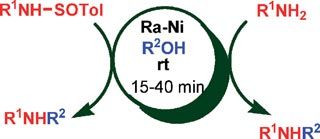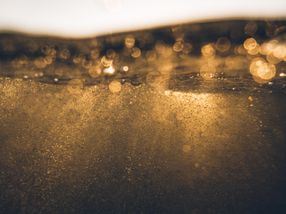Caltech chemists say antibody surrogates are just a 'click' away
Chemists at the California Institute of Technology (Caltech) and the Scripps Research Institute have developed an innovative technique to create cheap but highly stable chemicals that have the potential to take the place of the antibodies used in many standard medical diagnostic tests. James R. Heath, the Elizabeth W. Gilloon Professor and professor of chemistry, along with K. Barry Sharpless, the W. M. Keck Professor of Chemistry at the Scripps Research Institute and winner of the 2001 Nobel Prize in Chemistry, and their colleagues, describe the new technique in the latest issue of Angewandte Chemie. Last year, Heath and his colleagues announced the development of the Integrated Blood-Barcode Chip, a diagnostic medical device, about the size of a microscope slide, which can separate and analyze dozens of proteins using just a pinprick of blood. The barcode chip employed antibodies, proteins utilized by the immune system to identify, bind to, and remove particular foreign compounds, such as bacteria and viruses - or other proteins. "The thing that limits us in being able to go to, say, 200 proteins in the barcode chip is that the antibodies that you use to detect the proteins are unstable and expensive," says Heath. "We have been frustrated with antibodies for a long time, so what we wanted to be able to do was develop antibody equivalents - what we call 'protein capture agents' - that can bind to a particular protein with very high affinity and selectivity, and that pass the following test: you put a powder of them in your car trunk in August in Pasadena, and you come back a year later and they still work." In the new work, Heath and his colleagues, including Caltech graduate student Heather D. Agnew, the first author on the Angewandte paper, have developed a protocol to quickly and cheaply make such highly stable compounds, which are composed of short chains of amino acids, or peptides. "I actually traveled to Chicago with a vial of my capture agents as airline carry-on luggage, and came back with it, and the reagent still worked," says Agnew. The technique makes use of the "in situ click chemistry" method, introduced by Sharpless in 2001, in which chemicals are created by joining - or "clicking" - smaller subunits together. To create a capture agent for a particular protein, the scientists devised a stepwise approach in which the first subunit of the capture agent is identified, and that unit, plus the protein, is used to identify the second subunit, and so on. For the first subunit, a fluorescent label is added to the protein, which is then incubated with a bead-based library of tens of millions of short-chain peptides, representing all the potential building blocks for the capture agent. When one of those peptides binds to the protein of interest, the fluorescent label is visualized on the bead (red, blue, or green, depending on the type of label), allowing the linked protein–peptide complex to be identified. That first peptide - which is about a third of the length of the final capture agent the scientists are trying to make - is then isolated, purified, and modified on one end by the addition of a chemical group called an alkyne. This is the anchor peptide, which is then incubated, together with the same protein, with the bead-based library. The bead-based library now contains peptides that have been chemically modified to contain an azide group at one end. The alkyne group on the added peptide can potentially chemically react with the azide group of the library's peptides, to create a new peptide that is now two segments long. However, the reaction can only occur when the second peptide comes into close contact with the first on the surface of the target protein, which means that both must have affinity for that protein; essentially, the protein itself builds an appropriate capture agent. The two-segment-long peptide is then isolated and purified, "and then we modify the end of THAT with an alkyne, and add it back to the library, to produce a three-segment peptide, which is long enough to be both selective for and specific to the target protein," Heath says. "What Heath has shown now is that in several iterations, a high-affinity ligand for a protein can be created from blocks that do not bind to the protein all that well; the trick is to repeat the in situ screen several times, and the binding improves with every iteration," Sharpless says. "This is about as simple a type of chemistry as you can imagine," says Heath. The process, he says, makes "trivial" the "Herculean task of finding molecules that bind selectively and with high affinity to particular proteins. I see no technical reason it couldn't replace any antibody." Original publication: Heather D. Agnew et al.; "Iterative in situ Click Chemistry Creates Antibody-Like Protein Capture Agents"; Angewandte Chemie 2009
Other news from the department research and development
These products might interest you
Most read news
More news from our other portals
See the theme worlds for related content
Topic world Antibodies
Antibodies are specialized molecules of our immune system that can specifically recognize and neutralize pathogens or foreign substances. Antibody research in biotech and pharma has recognized this natural defense potential and is working intensively to make it therapeutically useful. From monoclonal antibodies used against cancer or autoimmune diseases to antibody-drug conjugates that specifically transport drugs to disease cells - the possibilities are enormous

Topic world Antibodies
Antibodies are specialized molecules of our immune system that can specifically recognize and neutralize pathogens or foreign substances. Antibody research in biotech and pharma has recognized this natural defense potential and is working intensively to make it therapeutically useful. From monoclonal antibodies used against cancer or autoimmune diseases to antibody-drug conjugates that specifically transport drugs to disease cells - the possibilities are enormous




























































